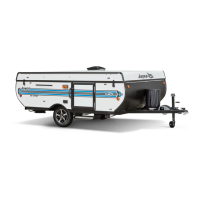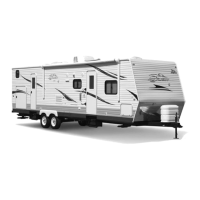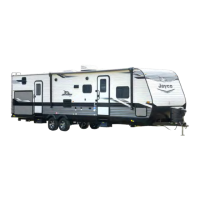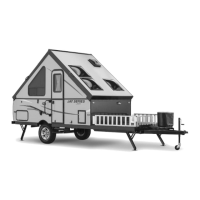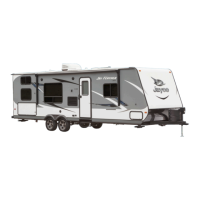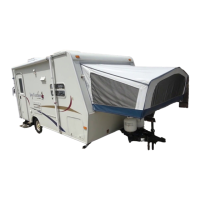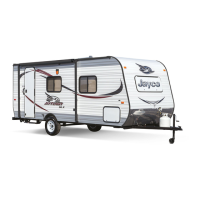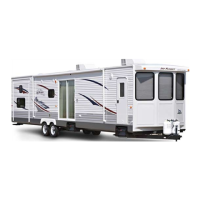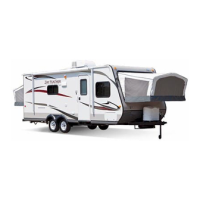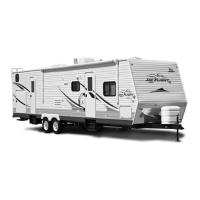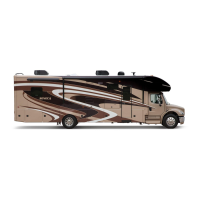5. Do not attempt to use water to put out the
fire. Water can spread some types of fire,
and create an electrocution hazard during
an electrical fire.
If you feel the fire was caused by a product
failure you must contact Jayco Customer
Service at (574) 825-0608 for approval before
you clean any debris, enter, move or repair the
RV (failure to notify Jayco may result in loss of
coverage). Otherwise, when the fire is out
clean up the area as soon as possible.
OTHER FIRE SAFETY INFORMATION
In addition to the fire safety information
contained in this section, to ensure an
appropriate response in an emergency fire
situation also refer to the following fire safety
topics:
0 Sec. 3 Electrical Systems, In case of an
electrical fire.
0 Sec. 8 Camping & Operating, In case of
a grease fire.
For more information on fire fighting, contact
your local fire department or the U.S. Coast
Guard. Additional information can be found at
the National Fire Protection Association
website (www.nfpa.org).
FIRE EXTINGUISHER
The Underwriter Laboratories classify
household fire extinguishers into four types:
Rating Intended Use
Type A
For use on fires involving combustible
materials such as wood, cloth and paper.
Type B
For use on flammable liquid fires,
including kitchen grease. Never use water
on this type of fire!
Type C
For use in fires involving energized
electrical equipment
Type
ABC
Works on all three types of fires listed
above.
The dry chemical fire extinguisher, suitable for
extinguishing small fires of the Class B and
Class C type, is located near the entry door.
Read the OEM operator’s manual and the
instructions on the fire extinguisher. Know how
and when to use the extinguisher and where it
is located. If there is any doubt on the
operation of the fire extinguisher, you and your
family should practice using it then replace it. It
is important to recognize when to leave the RV.
Your No. 1 priority is to get out safely.
CARBON MONOXIDE ALARM
Carbon monoxide (CO) is an insidious poison.
It is a colorless, odorless and tasteless gas.
Many cases of reported carbon monoxide
poisoning indicate while victims are aware
they are not well, they become so disoriented
they are unable to save themselves by either
exiting the RV or calling for assistance. Young
children and household pets may be the first
affected.
As of January 2005, carbon monoxide (CO)
detectors are now standard equipment in any
new RV. The carbon monoxide alarm is
operational once the 9-volt battery is correctly
connected. The LED will flash to show the
battery is supplying power to the alarm.
Individuals with medical problems may
consider using warning devices that provide
audible and visual signals.
The carbon monoxide alarm is designed to
detect the toxic carbon monoxide fumes that
result from incomplete combustion, such as
those emitted from appliances, furnaces,
fireplaces and auto exhaust. A carbon
monoxide alarm is NOT A SUBSTITUTE for
other combustible gas, fire or smoke alarms.
There are hazards against which carbon
monoxide detection may not be effective, such
as natural gas leaks or explosions.
17
SECTION 2
OCCUPANT SAFETY
Avoid inhaling the dry chemical agent in the
fire extinguisher. It is not toxic, but may
cause skin irritation. In case of contact,
flush the affected area with clean, cool
water. If irritation persists, contact a
physician immediately.

